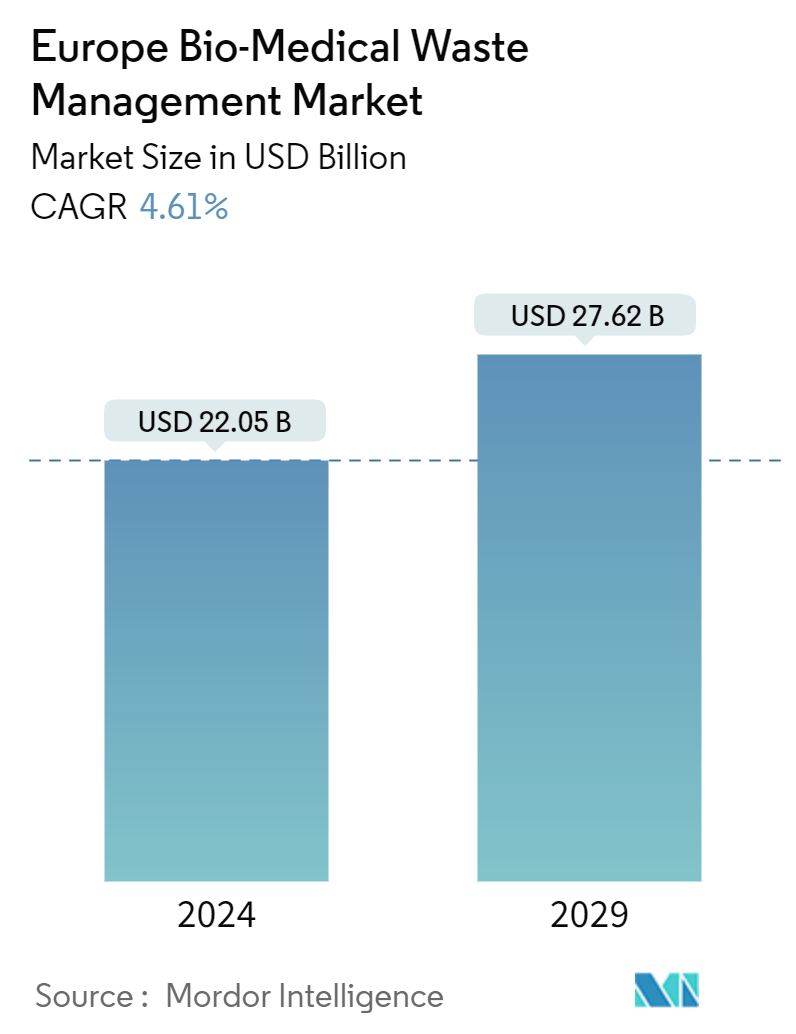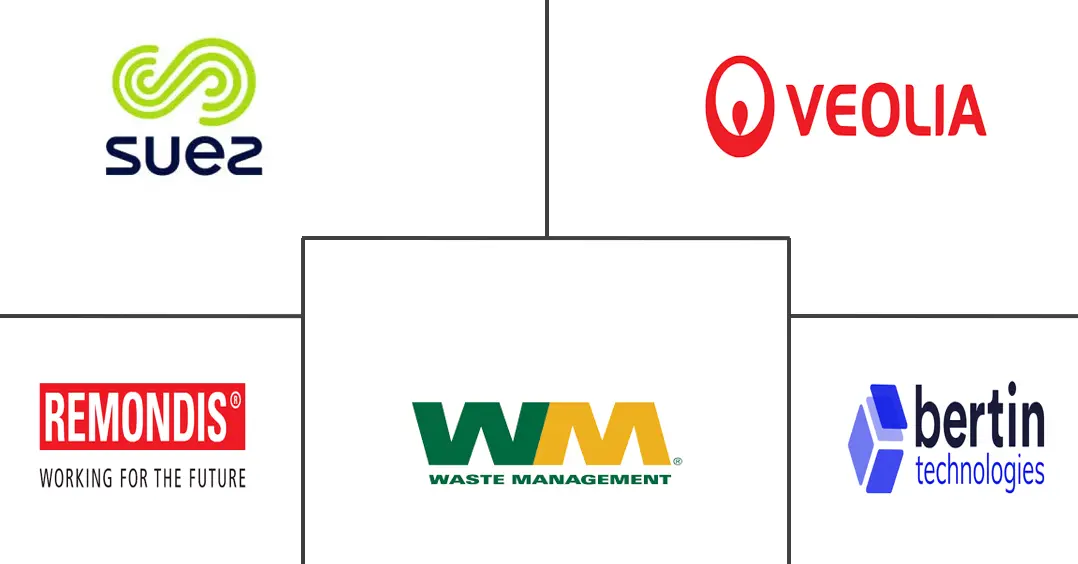Market Size of Europe Bio-Medical Waste Management Industry

| Study Period | 2020 - 2029 |
| Base Year For Estimation | 2023 |
| Market Size (2024) | USD 22.05 Billion |
| Market Size (2029) | USD 27.62 Billion |
| CAGR (2024 - 2029) | 4.61 % |
| Market Concentration | High |
Major Players
*Disclaimer: Major Players sorted in no particular order |
Europe Bio-Medical Waste Management Market Analysis
The Europe Bio-Medical Waste Management Market size is estimated at USD 22.05 billion in 2024, and is expected to reach USD 27.62 billion by 2029, growing at a CAGR of 4.61% during the forecast period (2024-2029).
The European bio-medical waste management market plays a pivotal role in the waste management industry, spurred by strict regulatory measures, a surge in healthcare activities, and an amplified focus on properly disposing of bio-medical waste.
European hospitals generate around 6 million tons of medical waste yearly, about one-third of which originates in operating rooms. Most of this solid waste is potentially recyclable unless contaminated by bodily fluids. Infectious waste, constituting only 2–3% of hospital waste, is significantly less than the 50–70% found in biohazard waste streams.
Germany's healthcare industry generates a small portion of waste that requires specialized handling. Approximately 5,000 kilograms, or up to 5%, of the country's annual healthcare waste falls under the category of infectious waste. This subset is deemed hazardous due to its infection risk and is thus classified under the Abfallverzeichnisverordnung (AVV), or waste directory regulation.
The production rate of healthcare waste (HCW) varies. It is influenced by waste management practices, the nature of healthcare facilities and their specializations, the availability of reusable equipment, and the daily patient load. Developing nations typically report lower registered HCW production than their developed counterparts. For instance, in Europe, HCW production rates range from 3.5 to 4.4 kg/bed/day, with specific figures like Norway at 3.9 kg/bed/day, Greece varying from 0.3 to 3.6 kg/bed/day, and France at 2.7 to 3.3 kg/bed/day.
Europe's bio-medical waste management market is consistently growing, primarily fueled by the mounting medical waste from expanding healthcare setups, research centers, and diagnostic labs. This growth trend is expected to persist, bolstered by the surging healthcare demands, especially during COVID-19, underscoring the criticality of effective bio-medical waste management.
Regulations from entities like the European Union and national governments underscore the need for proper disposal and treatment of bio-medical waste, emphasizing public health and environmental protection. Technological advancements, including innovations in waste treatment like autoclaving, incineration, and chemical treatments, are boosting the efficiency and safety of bio-medical waste management.
As the number of hospitals, clinics, and research facilities rises, along with the aging demographic, the volume of bio-medical waste also increases. Moreover, a heightened awareness of the risks associated with improper bio-medical waste disposal is spurring the demand for professional waste management services.
While these advanced waste treatment technologies and regulatory compliance are crucial, they come at a significant cost, especially for smaller healthcare entities. Waste management service providers face challenges in navigating the intricate and varied regulations prevalent across European nations.

